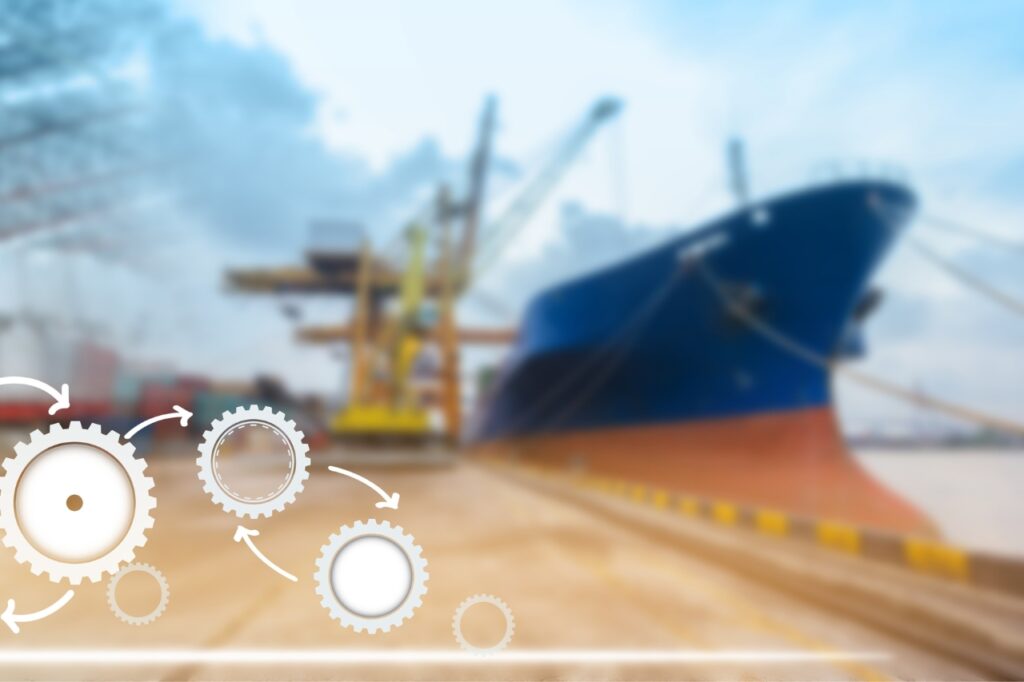How Supply Chain Design Has Evolved from Simple Maps to Sophisticated Models
Once upon a time, in a decade called “The Eighties,” the complexities of supply chains were mapped out with what might now seem like archaic methods: mainframe computers, sprawling charts, and long-term projections. But those days are long gone. Welcome to the dynamic world of modern supply chain design—a realm revolutionized by advanced computing, globalization, and, most importantly, an increased acceptance of uncertainty and variability. We delve into insights from industry veteran and GAINS VP of Solution Design Jeff Metersky to understand how we got here and where we are headed.
A Blast from the Past
Remember when companies made long-term commitments for things like locations of factories and distribution centers? Well, that was your grandpa’s supply chain design. It was once all about “strategic network design,” a term that now feels almost quaint. Companies planned with a 10-year horizon focused solely on infrastructure like factories and warehouses. They were essentially building physical maps that rarely changed.
A World in Black and White
Supply Chain philosophy used to be straightforward: “Build it, and they will come.” For instance, if a business wanted to understand the best way to distribute its products, it had to decide on the location and capacity of each warehouse. The same went for manufacturing plants. These decisions were monumental, locked-in commitments, calculated to minimize costs, optimize efficiency, and were literally set in stone for years to come. At the time, the computing power needed to make those calculations was so great and computing ability so limited that algorithms were run on bulky mainframes that would occupy entire rooms in 1980, a single IBM Mainframe computer took up 11,000 square feet.
Enter Variability and Uncertainty
Fast forward to today, and it is a much different story. We’re not just talking about strategic network design anymore. The modern supply chain is substantially more fluid, adapting to changes like a stream finding its path. It’s no longer about building a solid, unchanging infrastructure it’s about figuring out “policies” or “flows” that are able to change in real time. If you had to apply a buzzword to it, it would be “Supply Chain Agility.”
Complexity Meets Technology
In the early days, mixed integer linear programming, or MILP, was primarily used to minimize costs based on a pretty stable set of assumptions. It was a time when you could mostly rely on consistent demand, predictable lead times, and fixed costs. The problem with that approach? It doesn’t work in a world that’s anything but stable. We’re talking about a global landscape riddled with uncertainties—from trade wars and tariffs to the disruptions caused by pandemics or natural disasters. It’s a volatile, uncertain, complex, and ambiguous world.
So, what’s changed? Algorithms have gotten smarter and more dynamic. They’ve had to. These aren’t the algorithms of yesteryear that spit out a ‘one-size-fits-all’ solution based on static inputs. Today’s algorithms can simulate multiple scenarios under various conditions, enabling us to make better, more informed decisions. We can now analyze how a sudden spike in shipping costs or a delay at a foreign port could impact our supply chain and plan for it. These algorithms allow us to be agile, adaptable, and prepared for whatever curveballs the world throws at us.
So, while MILP served as a cornerstone, it’s no longer the be-all and end-all of the supply chain. We have moved beyond that. We’re talking about a set of tools and techniques that openly embrace variability and uncertainty rather than ignore them. And that’s a game-changer.
Why it Matters
This new complexity we are experiencing results from a world that has itself become more complex. Whether due to the volatility of international politics affecting global shipping lanes or the ambiguity caused by climate change and its impact on resources, the supply chain is a mirror of the challenges our world faces. And now more than ever, it needs to adapt quickly to keep up.
The Future is Uncertain, and That’s Okay
The next frontier in supply chain design is learning how to be comfortable with uncertainty. Gone are the halcyon days when a single fixed number could guide a decision for a decade. Now, companies need to consider an array of potential futures and adapt on the fly. Existing tools and models are still catching up to this reality. The quest is on for new methodologies that embrace not just the known variables but the unknowns as well.
Conclusion
The story of supply chain design is not just a tale of companies figuring out how to move things from Point A to Point B. It’s a snapshot in time of the business world adapting to global change. As methods evolve from static models to dynamic flows, from mainframes to machine learning, one thing is clear: the supply chain is no longer set in stone; it’s as dynamic as the world it operates in.
By embracing this philosophy, businesses today are preparing not just for the next quarter but for an entire future filled with unknowns. And in doing so, they might just be designing a more adaptable, resilient world for all of us.
Jeff Metersky is a 35-year Supply Chain Veteran and VP of Solution Design. For more from Jeff, follow the links below.
LISTEN to Jeff on the GAINS On: Podcast
Mastering Risk Mitigation: Unleashing the Power of Supply Chain Design By Jeff Metersky
Is A “Set It And Forget It” Mindset Your Best Option In A Volatile Supply Chain Environment? Featuring Jeff Metersky



